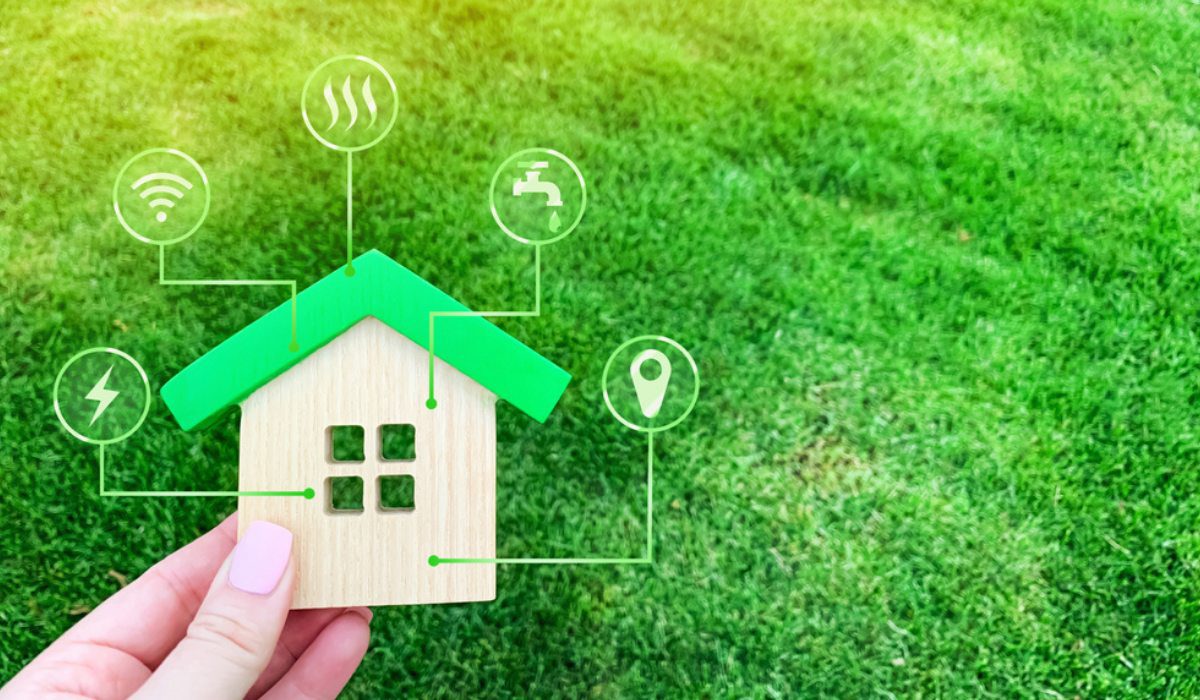The Ultimate Guide to Eco-Friendly Home Improvements in 2025

Sustainability has become a cornerstone of modern living, and homeowners are increasingly prioritizing eco-friendly upgrades. Whether you aim to reduce your carbon footprint, lower energy bills, or create a healthier living environment, 2025 offers innovative solutions for green living. This ultimate guide explores eco-friendly home improvements to transform your space into an environmentally conscious haven.
Why Eco-Friendly Home Improvements Matter
Adopting sustainable practices at home is more than a trend—it’s a commitment to preserving the planet. Eco-friendly upgrades reduce resource consumption, promote energy efficiency, and improve overall well-being. These changes also increase property value, making your home appealing to eco-conscious buyers.
1. Embrace Solar Power
Solar energy continues to lead the charge in renewable energy solutions. Installing photovoltaic (PV) panels on your roof allows you to harness the sun’s power, reducing reliance on traditional electricity sources. In 2025, advancements in solar panel technology make them more efficient, affordable, and aesthetically pleasing. Pairing panels with battery storage systems ensures uninterrupted energy even on cloudy days.
2. Upgrade to Smart Appliances
Smart home technology has revolutionized energy efficiency. Modern appliances like refrigerators, washing machines, and dishwashers are designed to minimize power and water usage without compromising performance. Integrating these appliances with a home automation system enables precise control over energy consumption, optimizing savings while reducing environmental impact.
3. Invest in High-Performance Insulation
A well-insulated home reduces heating and cooling demands, cutting energy use significantly. Opt for eco-friendly insulation materials such as cellulose, wool, or cork. These materials not only provide superior thermal performance but also contain fewer harmful chemicals compared to conventional options. Insulating walls, attics, and floors ensures year-round comfort with minimal environmental cost.
4. Choose Sustainable Flooring
Flooring is an integral aspect of eco-friendly design. Bamboo, reclaimed wood, and cork are renewable materials that offer durability and elegance. For wet areas like kitchens and bathrooms, consider recycled tiles or linoleum made from natural components. These options provide stylish finishes while adhering to sustainable principles.
5. Install Energy-Efficient Windows and Doors
Windows and doors are critical in maintaining indoor temperature and reducing energy loss. Double or triple-glazed windows with low-emissivity coatings are excellent choices for 2025. Opt for frames made from recycled or sustainably sourced materials, such as wood or composite. Energy-efficient windows not only save money but also enhance your home’s aesthetic appeal.
6. Harness Rainwater and Reduce Water Waste
Water conservation is a vital component of sustainable living. Installing a rainwater harvesting system allows you to collect and store rainwater for irrigation or household use. Additionally, low-flow faucets, showerheads, and dual-flush toilets reduce water consumption without sacrificing performance. Smart irrigation systems can further optimize garden watering by adjusting schedules based on weather conditions.
7. Adopt Green Roofing Solutions
Green roofs—covered with vegetation—offer insulation, reduce urban heat, and improve air quality. They are particularly effective in urban areas, where green space is limited. Modular green roof systems available in 2025 make installation simpler, allowing homeowners to reap the benefits of these eco-friendly installations with minimal effort.
8. Opt for Eco-Friendly Paints and Finishes
Conventional paints and finishes can release volatile organic compounds (VOCs), which harm indoor air quality and the environment. Eco-friendly paints are low in VOCs and made from natural or recycled materials. Choosing these products for walls, furniture, and other surfaces ensures a healthier living space while contributing to sustainability.
9. Incorporate LED Lighting
Lighting is an easy area to improve sustainably. LED bulbs use significantly less energy than incandescent or halogen bulbs and last much longer. In 2025, advancements in LED technology provide an array of designs and color temperatures to suit any ambiance, making them a must-have for eco-conscious homeowners.
10. Furnish Responsibly
Eco-friendly furniture prioritizes materials and production methods that are kind to the planet. Seek out pieces made from reclaimed wood, recycled metals, or responsibly sourced textiles. Buying second-hand furniture or refurbishing existing items also reduces waste and adds unique character to your home.
11. Create an Indoor Garden
Indoor gardens enhance aesthetics, improve air quality, and promote mental well-being. Vertical gardens, potted plants, or hydroponic systems bring greenery into your living space. Species like peace lilies, snake plants, and ferns are particularly effective at purifying indoor air, creating a healthier environment for your family.
12. Upgrade Your HVAC System
Heating, ventilation, and air conditioning systems are major energy consumers. Switching to an energy-efficient HVAC system can dramatically reduce energy use. In 2025, heat pumps and smart thermostats have become standard for eco-friendly climate control, ensuring optimal temperature regulation without excessive energy expenditure.
Financial Incentives for Eco-Friendly Improvements
Governments and organizations worldwide recognize the importance of sustainability, offering incentives for green upgrades. Tax credits, rebates, and grants are often available for installing renewable energy systems, upgrading insulation, or purchasing energy-efficient appliances. These financial benefits make eco-friendly improvements more accessible than ever.
The Long-Term Benefits of Sustainable Living
Eco-friendly home improvements are not just about immediate savings or aesthetic upgrades. They contribute to a healthier planet, improve indoor living conditions, and often result in lower utility bills over time. Additionally, they future-proof your property, aligning it with evolving environmental regulations and buyer preferences.
Conclusion
“The Ultimate Guide to Eco-Friendly Home Improvements in 2025” showcases how small changes can have a profound impact on your home and the environment. By integrating renewable energy, sustainable materials, and smart technologies, you can create a space that is both modern and environmentally responsible. Start your journey toward sustainable living today and enjoy the rewards of a greener, healthier home for years to come.
